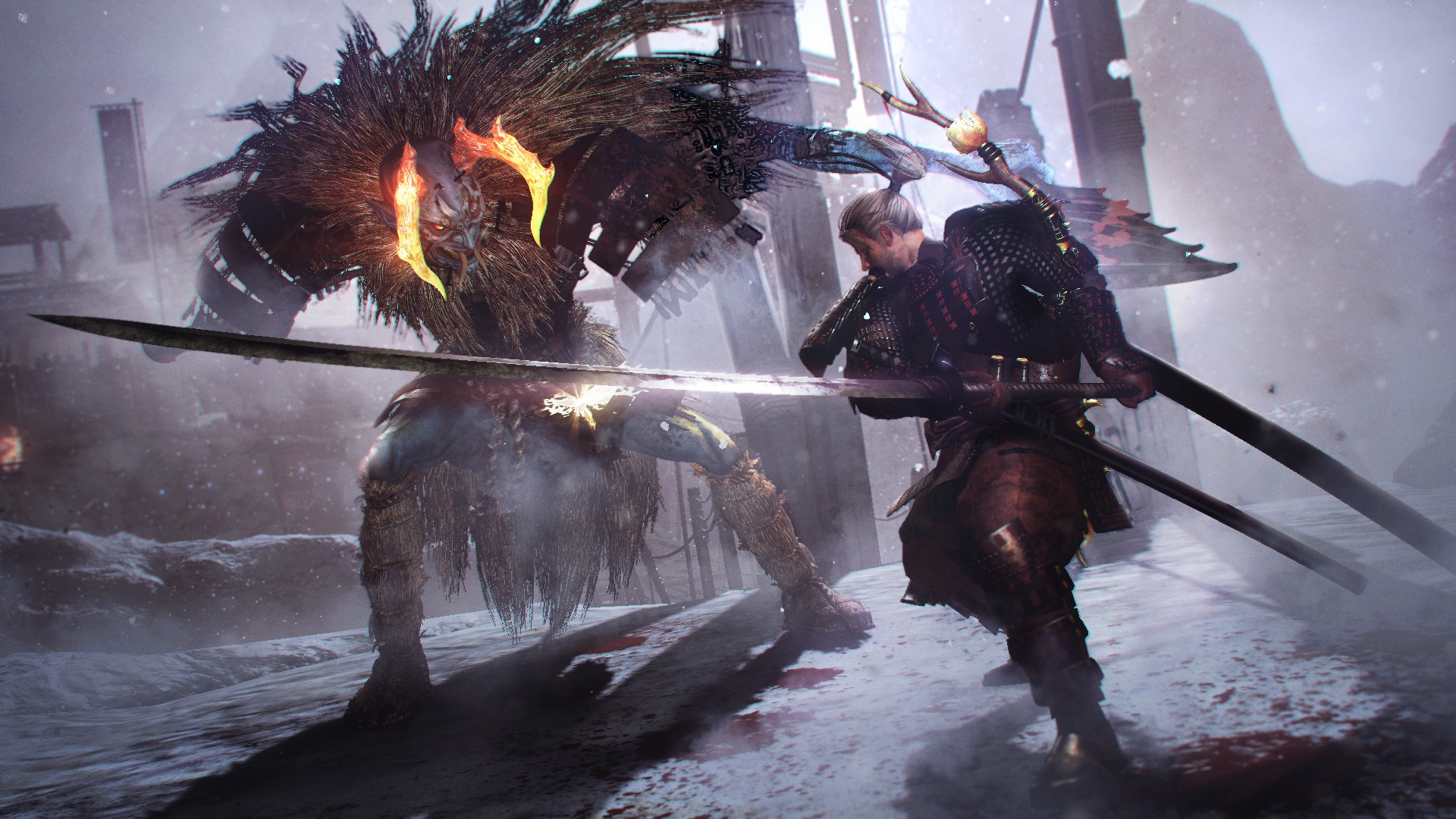

You can of course force something specific to your liking via your graphics card control panel, but all the same, it would be preferable to have the option built into the application. One major omission is the lack of any sort of anti-aliasing options built into Nioh's configuration settings.

After some playing around with both, I'm guessing rendering resolution is actually adjusting what resolution the that the textures in-game display at separately from the screen resolution. There are toggles for screen resolution and rendering resolution, with the game not explaining what the latter option really does. The rendering options in Nioh are needlessly confusing. Being able to adjust things on the fly without rebooting would help things a bit. As previously mentioned, Nioh is a very demanding game and certain environments will tax your hardware more than others. It's not a huge deal that you can't adjust a lot of these settings while the game is running, but it is a pain all the same.
#NIOH PC SERVER IP SOFTWARE#
The only real difference here is it's missing most of the options in the launcher, and you can also enable Nivdia ShadowPlay Highlights if you have an Nivdia GPU with the Geforce Experience software installed on your PC.

The second set of graphical options is available in the settings once you actually launch the game. This is where you'll be able to set the screen resolution, rendering resolution, shadow quality, frame rate cap, display mode, ambient occlusion, camera motion blur, and dynamic reflections. If you don't set these options before launching the game, they default to the lowest possible options and make the game look hideous. The first is a launcher you should open before actually firing up the game.
#NIOH PC SERVER IP PS4#
This is more than likely due to the engine switching between assets of one area to another, and it was noticeable on PS4 as well, so it's not a huge problem.Īnother oddity with Nioh on PC is how graphics settings are set and applied, as the game has two separate areas to adjust settings. The only other sort of performance issues we've encountered outside of the framerate dropping is a bit of hitching when transitioning between areas. So to hit 4k at a 60FPS would have required turning down some of the other knobs such as shadow quality or turning off the ambient occlusion. Obviously, 4k is demanding in most games, but Nioh isn't exactly a technical showpiece and the performance on a high-end card GTX 1080 seems a bit lacking. Bumping the resolution up to 4k is where the problems really started to come in though, maintaining 60FPS at 2160p was a major struggle for my system with the framerate ducking down to below 30FPS in some situations. 1440p was also very manageable but with a few moments where the game would dip below 50FPS. Running the game at 1080p 60FPS was a breeze, and next to no framerate drops.


 0 kommentar(er)
0 kommentar(er)
